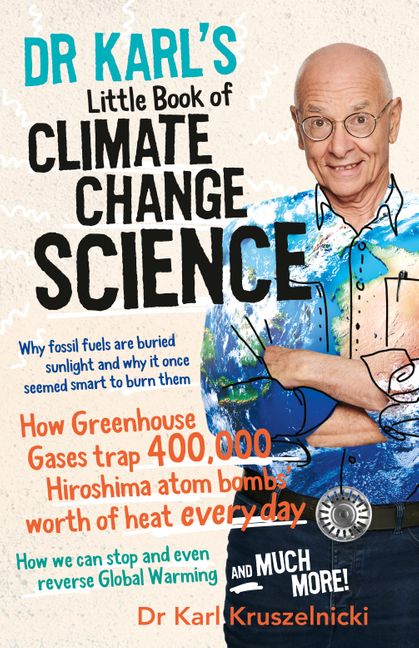Report on Global Warming Projections and Implications for Sustainable Development Goals
Executive Summary
A recent international scientific assessment indicates that escalating greenhouse gas emissions are projected to cause the planet to exceed the 1.5°C global warming threshold established by the Paris Agreement within the next three years. This accelerated timeline presents a significant threat to global stability and directly undermines the achievement of the United Nations Sustainable Development Goals (SDGs), particularly SDG 13 (Climate Action). The findings, published in Earth System Science Data by a consortium of over 60 scientists, serve as a critical update to the 2021 IPCC report, highlighting the urgent need for intensified global cooperation and immediate, drastic emissions reductions.
Key Scientific Findings
The report presents several critical indicators of accelerating climate change:
- Unprecedented Rate of Warming: Human-induced warming has accelerated to a rate of 0.27°C per decade over the period of 2015-2024, the highest in recorded history.
- Record Greenhouse Gas Emissions: While the rate of increase has shown signs of slowing, overall greenhouse gas emissions have reached an all-time high, driving the current warming trend.
- Depletion of the Carbon Budget: The remaining global carbon budget, which represents the amount of CO2 that can be emitted while retaining a 50% chance of limiting warming to 1.5°C, is projected to be exhausted in just over three years if emissions continue at 2024 levels.
- Earth’s Energy Imbalance (EEI): The planet’s absorption of heat has more than doubled since 1975, with a particularly sharp and unexplained increase in ocean heat accumulation in 2023 and 2024.
- Temperature Milestones: The year 2024 marked the first calendar year to surpass the 1.5°C warming threshold, reaching 1.52°C above pre-industrial levels. Of this, an estimated 1.36°C is directly attributable to human-induced climate change.
Implications for Sustainable Development Goals (SDGs)
The report’s findings have profound and direct consequences for the 2030 Agenda for Sustainable Development. The failure to control global warming actively jeopardizes progress across multiple interconnected goals.
- SDG 13 (Climate Action): The imminent breach of the 1.5°C target signifies a critical setback for SDG 13. The data confirms that current global efforts are insufficient and that immediate, transformative action is required to mitigate climate change and its impacts.
- SDG 14 (Life Below Water): The rapid increase in ocean heat content and the prevalence of marine heatwaves pose a direct threat to marine biodiversity, coral reefs, and fisheries. This undermines the core objectives of SDG 14 to conserve and sustainably use the oceans, seas, and marine resources.
- SDG 3 (Good Health and Well-being): Intensified and more frequent extreme weather events, such as the historic heatwaves mentioned in the analysis, lead to increased heat-related mortality and illness, placing a severe strain on public health systems and compromising the achievement of SDG 3.
- SDG 11 (Sustainable Cities and Communities): The escalating risk of extreme weather threatens urban infrastructure, displaces populations, and endangers the safety of communities, directly conflicting with the aim of SDG 11 to make human settlements inclusive, safe, resilient, and sustainable.
- SDG 7 (Affordable and Clean Energy): The report’s focus on record-high emissions from human activities highlights the critical dependency on fossil fuels and reinforces the urgency of accelerating the transition to clean and affordable energy sources as mandated by SDG 7.
Conclusion: A Critical Decade for Action
The scientific evidence confirms that the world is in a “critical decade” for climate action. While the outlook is grim, the report notes that the rate of increase in emissions has begun to slow. This suggests that swift, decisive, and globally coordinated policy choices to drastically reduce emissions could still halve the rate of warming over the next 20 years. The successful implementation of the Paris Agreement and the achievement of the Sustainable Development Goals are fundamentally dependent on the immediate adoption of stringent climate mitigation strategies.
Analysis of Sustainable Development Goals in the Article
1. Which SDGs are addressed or connected to the issues highlighted in the article?
The article primarily addresses issues related to climate change and its scientific assessment, directly connecting to the following Sustainable Development Goals:
- SDG 13: Climate Action: This is the central SDG discussed. The entire article revolves around the urgent need to combat climate change and its impacts, focusing on rising greenhouse gas emissions, global temperature increases, and the failure to meet the Paris Agreement targets.
- SDG 14: Life Below Water: The article explicitly mentions the impact of climate change on oceans. It notes that heat has accumulated in the oceans at “increasingly deeper depths” and highlights “record temperatures in the Mediterranean sea,” which directly relates to the conservation and sustainable use of marine resources.
- SDG 17: Partnerships for the Goals: The article highlights the collaborative nature of the scientific report it discusses. It mentions that the assessment was “led by a group of international researchers” and “signed by over 60 scientists across 17 countries,” which exemplifies the global partnership needed to address sustainable development challenges.
2. What specific targets under those SDGs can be identified based on the article’s content?
Based on the article’s content, the following specific targets can be identified:
-
Under SDG 13 (Climate Action):
- Target 13.1: Strengthen resilience and adaptive capacity to climate-related hazards and natural disasters in all countries. The article points to the urgency of this target by mentioning the intensification of “extreme weather events” and citing a “historic heatwave smothering Europe.”
- Target 13.2: Integrate climate change measures into national policies, strategies and planning. The article’s discussion of the Paris Agreement’s 1.5°C goal and the warning that the world is on track to “overshoot” it underscores the gap between international goals and current policies. The call for “swift and strict emission decreases” implies the need for stronger policy integration.
-
Under SDG 14 (Life Below Water):
- Target 14.3: Minimize and address the impacts of ocean acidification, including through enhanced scientific cooperation at all levels. While not mentioning acidification specifically, the article’s focus on ocean warming (“heat has accumulated continuously, warming… particularly, the oceans”) and “record temperatures in the Mediterranean sea” addresses a critical impact on marine ecosystems. The report itself is a form of “enhanced scientific cooperation.”
-
Under SDG 17 (Partnerships for the Goals):
- Target 17.16: Enhance the global partnership for sustainable development, complemented by multi-stakeholder partnerships that mobilize and share knowledge. The article is based on a report that is a direct outcome of such a partnership, involving “over 60 scientists across 17 countries” sharing knowledge to fill a gap in IPCC reporting.
3. Are there any indicators mentioned or implied in the article that can be used to measure progress towards the identified targets?
Yes, the article mentions several specific quantitative and qualitative indicators that can be used to measure progress:
- Global Temperature Increase: The article states that human-induced warming reached “0.27C per decade over 2015-2024” and that the global annual-mean surface temperature change reached “1.52C” last year, directly measuring the deviation from the Paris Agreement target.
- Greenhouse Gas (GHG) Emissions: It is noted that GHG emissions are at an “all-time high,” serving as a primary indicator for the drivers of climate change.
- Remaining Carbon Budget: The article quantifies this indicator, stating that the budget is being “depleted faster than expected” and would be exhausted “in a little more than three years” at current emission levels. This measures the remaining capacity for emissions before hitting the 1.5°C limit.
- Earth’s Energy Imbalance (EEI): Mentioned as a “key indicator of how fast climate change is progressing,” the article notes that the EEI “has more than doubled” since 1975, indicating the rate of heat absorption by the planet.
- Sea Surface Temperature Anomaly: The article includes a figure showing the “Daily sea surface temperature anomaly (°C),” a direct indicator of ocean warming and marine heatwaves.
- International Scientific Collaboration: The mention of “over 60 scientists across 17 countries” serves as a qualitative indicator for the strength of global partnerships (Target 17.16) in addressing climate change.
4. Table of SDGs, Targets, and Indicators
| SDGs | Targets | Indicators |
|---|---|---|
| SDG 13: Climate Action |
13.1: Strengthen resilience to climate-related hazards.
13.2: Integrate climate change measures into policies. |
– Rate of human-induced warming (0.27°C per decade over 2015-2024). – Global temperature increase above pre-industrial levels (1.52°C). – Greenhouse gas emission levels (“all-time high”). – Remaining carbon budget (to be exhausted in ~3 years). – Occurrence of extreme weather events (e.g., “historic heatwave”). |
| SDG 14: Life Below Water | 14.3: Minimize and address impacts on marine ecosystems (e.g., ocean warming). |
– Earth’s Energy Imbalance (EEI) has “more than doubled since 1975.” – Sea surface temperature anomaly (°C). – Record temperatures in the Mediterranean Sea. |
| SDG 17: Partnerships for the Goals | 17.16: Enhance the global partnership for sustainable development through shared knowledge. | – Number of collaborating scientists and countries on the report (“over 60 scientists across 17 countries”). |
Source: earth.org






